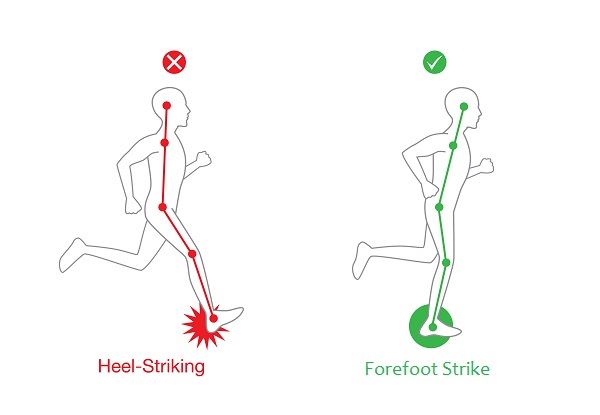Form: Footstrike
Its no secret that running form is important. Proper running form keeps runners healthy, and improves running economy (how efficient a runner is). Any runner looking to become faster, or run for longer should try to perfect their form so that they can stay healthy, and make running more enjoyable.
Picture from The Peaceful RunnerFirst things first, lets start with foot strike. Foot strike is where a runner lands on the sole of their foot during their stride. The healthiest and most efficient area to strike the ground is with the ball of the foot. This is the area of the foot beneath the toes, or the "knuckle" of the foot. Its important to try not to land on the toes, as this can cause stress on the toes and eventually lead to injury.
Another common mistake many runners make is landing on the heel. While this is okay while jogging for slow and short distances, as you up your pace and mileage this can put immense stress on almost all lower body joints include the knees, ankles, and hips. This is because the foot is designed to absorb a great deal of the energy when you land on the ground. By landing on the heel this causes the entire weight and force of the body to get shot directly up the leg and through the body, putting stress on the joints.
Many runners, myself included were heel strikers. When I first got into running, I rarely thought about form and would just go run. Because of this I developed a pretty noticeable heel strike wich kept with me until for my first few years of running. Throughout these years I suffered through multiple knee and ankle injuries due to my heel strike without even knowing it.
During the next Cross country season I knew something had to change, so I worked on my form. I learned that my stride was too long, and I was running with my legs too far out in front of me and pulling myself foreword, instead of keeping my legs underneath me and pushing off of the ground below. Because of this I was landing on my heal instead of my forefoot and this was causing my problems. After switching up my form and other treatment, I felt improvement, and my plantar fasciitis slowly went away.
Moral of the story : Form is important, and correcting it can help reduce injury


I've learned about this during soccer, and I believe it is very beneficial to not hurting yourself and learning how to properly do it.
ReplyDeleteIt really show that heel-stricking is very bad for any runner and should be fixed immediately!
ReplyDeletethanks you saved me a trip to the er
ReplyDelete